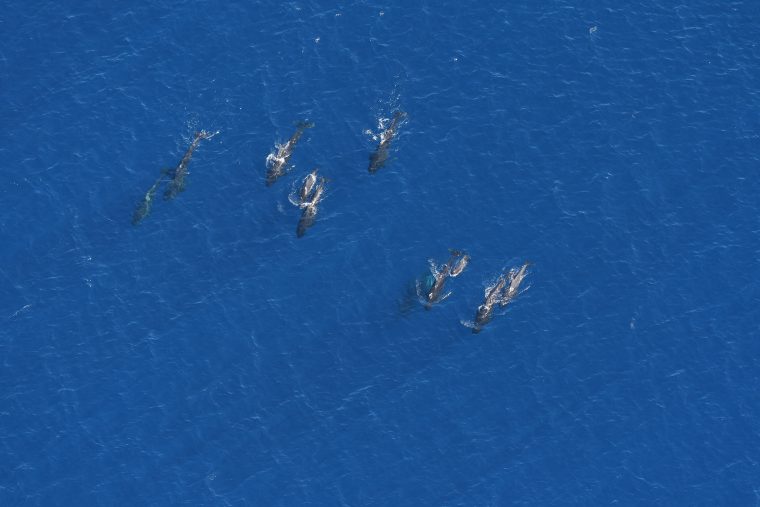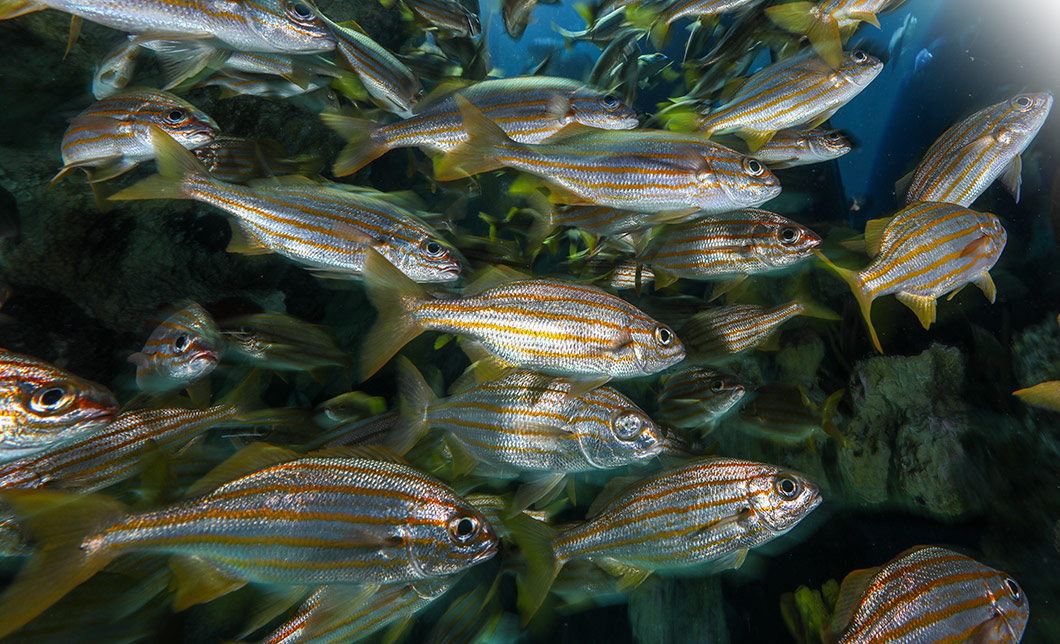We will be closed on Tuesday, April 30, for a day of strategy work and team building.
The New Balance Foundation Marine Mammal Center will be closed for exhibit maintenance on Monday, April 29 and Wednesday, May 1.
Summer aerial survey find whale sharks, the largest sharks in the world

BOSTON, MASS. (August 24, 2020) — Earlier this month, researchers at the New England Aquarium’s Anderson Cabot Center for Ocean Life set off to survey the vast Northeast Canyons and Seamounts Marine National Monument about 130 miles southeast of Cape Cod. These surveys document the region’s biodiversity and count the number of animals living and feeding there. Three hours later, the team had seen 972 animals across 10 different species.
Here is a link to the photos and images from the survey. (Please credit NEW ENGLAND AQUARIUM): https://neaq-my.sharepoint.com/:f:/g/personal/kmckenna_neaq_org/EuBR8TNPK6JDpPUi8ZWhu20BGZTqsBP_npjueXdk2NvA1g?e=dW8na1
The Aquarium’s aerial survey team has flown this area for three years, but this survey was the first one conducted since the coronavirus pandemic began in March. Within the first 15 minutes of the survey, researchers Orla O’Brien and Katherine McKenna had already seen over 200 animals. In just three hours, they saw 589 Risso’s dolphins, 258 bottlenose dolphins, 20 pilot whales, 30 striped dolphins, a sperm whale, an unidentified beaked whale, 56 hammerhead sharks, four whale sharks, one unidentified shark, one manta ray, and one Chilean devil ray.
For both researchers, this was the first time they had seen a whale shark. These endangered sharks are the largest shark species in the world, growing up to 40 feet long. In the three years that these surveys have been conducted, only one whale shark had been observed up until this point, but these researchers had the opportunity to see four. According to Dr. Jeff Kneebone of the Anderson Cabot Center’s Fisheries Science and Emerging Technologies program, whale sharks can be quite common in the Northeast Canyons when the right circumstances exist. In the summer, warm water from the Gulf Stream can get pushed into the shelf break, creating good conditions for whale sharks.
The Northeast Canyons and Seamounts Marine National Monument is a hotspot of biodiversity on the edge of the continental shelf where the shallow seas off New England drop sharply into the deep waters of the northwestern Atlantic. In 2016, President Obama designated three underwater canyons, one as deep as the Grand Canyon, and four seamounts as tall as the Rockies, as the first, and only, Marine National Monument in U.S. Atlantic waters. Early in the Trump Administration, the Department of the Interior recommended that the protections in the monument be weakened by allowing commercial fishing within its boundaries, and in June 2020, President Trump signed a proclamation lifting the prohibition of commercial fishing thereby exposing these fragile ecosystems to permanent damage.
The New England Aquarium and Mystic Aquarium played a crucial role in the designation of the monument, which is nearly 5,000 square miles and contains many rich ecosystems. The aquariums provided strong scientific evidence about this diverse habitat in cold, nutrient-rich waters that supports deep-sea corals and offers food and shelter to sea birds and other endangered and threatened marine species including sea turtles, sharks, and whales. Ongoing aerial surveys are important for continuing to gather data on the monument’s environmental significance. Currently only 3 percent of U.S. waters are fully protected. To ensure ongoing sustainability of our oceans, there is a growing movement among scientists and global leaders calling to protect 30 percent of the land and the sea by 2030.
A recently published paper (Auster et al. 2020), co-authored by Brooke Hodge of the Anderson Cabot Center’s EcoMap program, and Dr. Scott Kraus, emeritus scientist at the Center, explored the historical marine mammal sightings in the area and the scientific basis for the creation of the monument.
“Our team is grateful to have the opportunity to conduct these aerial surveys,” McKenna wrote in a recent blog post. “The novel information gained on each survey highlights the need for continued research to support the protection of the Monument and other highly productive marine areas.”
MEDIA CONTACT:
Pam Bechtold Snyder, psnyder@neaq.org; 617-686-5068

